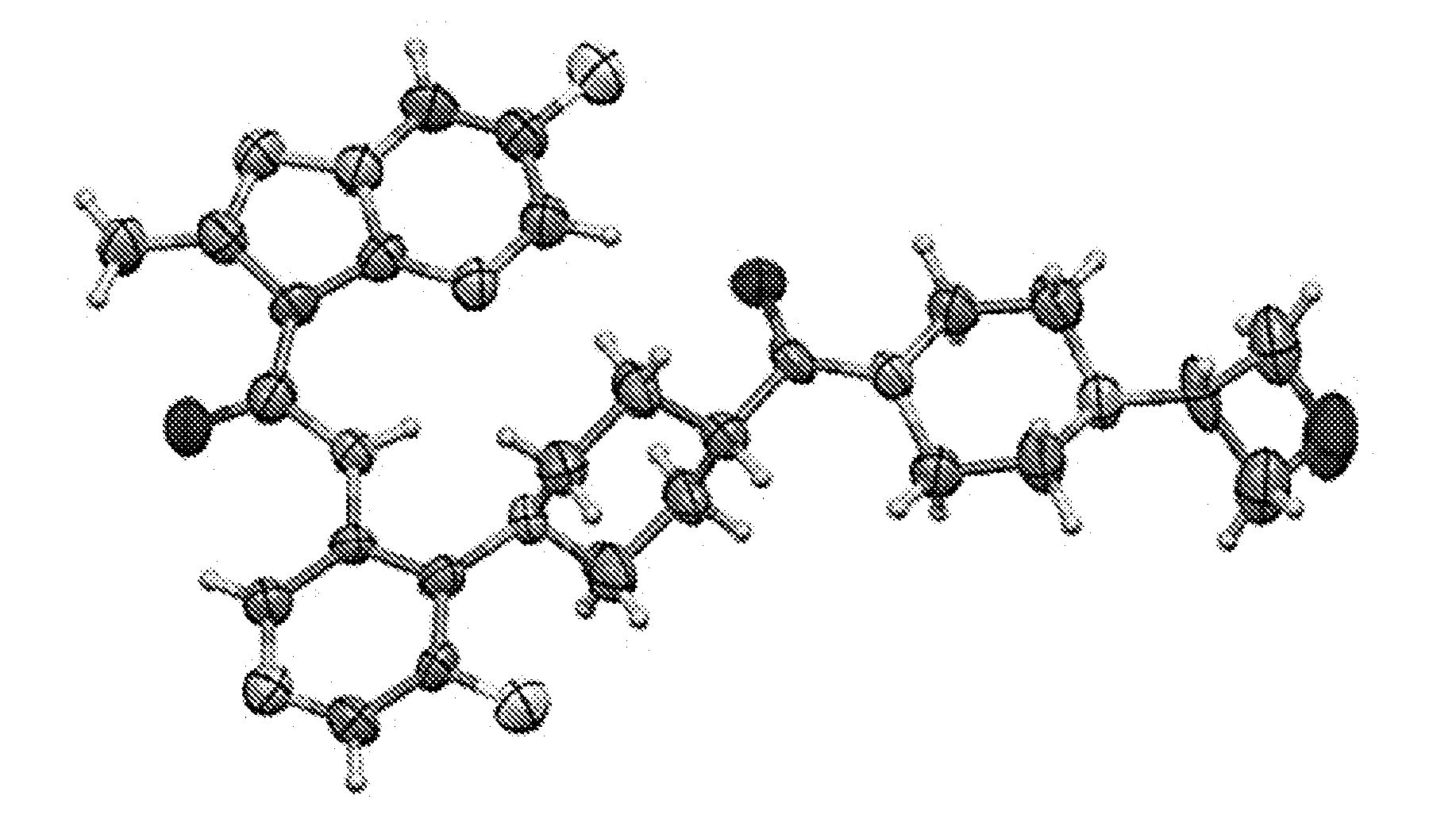Compounds useful as inhibitors of atr kinase
a technology of atr kinase and compounds, which is applied in the preparation of carbonyl compounds, isotope introduction of heterocyclic compounds, and drug compositions, etc., can solve problems such as dna damag
- Summary
- Abstract
- Description
- Claims
- Application Information
AI Technical Summary
Benefits of technology
Problems solved by technology
Method used
Image
Examples
example 1
Synthesis of 2-amino-6-fluoro-N-[5-fluoro-4-[4-[4-(oxetan-3-yl)piperazine-1-carbonyl]-1-piperidyl]-3-pyridyl]pyrazolo[1,5-a]pyrimidine-3-carboxamide (Compound I-1)
[0471]
Step 1: tert-butyl 1-[3-[(2-amino-6-fluoro-pyrazolo[1,5-a]pyrimidine-3-carbonyl)amino]-5-fluoro-4-pyridyl]piperidine-4-carboxylate 28
[0472]A mixture of (6-chlorobenzotriazol-1-yl) 2-amino-6-fluoro-pyrazolo[1,5-a]pyrimidine-3-carboxylate 6a* (44.02 g, 126.6 mmol) and tert-butyl 1-(3-amino-5-fluoro-4-pyridyl)piperidine-4-carboxylate 27 (prepared according to Preparation 7b) (34 g, 115.1 mmol) in pyridine (510.0 mL) was heated at 95° C. internally overnight (18 hr.). Mixture was cooled to room temperature (product precipitated) then added ethanol (340.0 mL) and stirred at room temperature for 10 mins. Collected yellow solid by filtration, washed well with ethanol, dried by suction, then on high vac line for 1 hr. to leave product 28 as a yellow solid, (32.5 g 56% yield). 1H NMR (500 MHz, DMSO-d6) δ 10.45 (s, 1H), 9.58 (...
example 2
Alternative approach to synthesis of 2-amino-6-fluoro-N-[5-fluoro-4-[4-[4-(oxetan-3-yl)piperazine-1-carbonyl]-1-piperidyl]-3-pyridyl]pyrazolo[1,5-a]pyrimidine-3-carboxamide (Compound I-1)
[0478]
Step 1: tert-butyl 1-(3-(2-amino-6-fluoropyrazolo[1,5-a]pyrimidine-3-carboxamido)-5-fluoropyridin-4-yl)piperidine-4-carboxylate 28
[0479]6-chloro-1H-benzo[d][1,2,3]triazol-1-yl 2-amino-6-fluoropyrazolo[1,5-a]pyrimidine-3-carboxylate 6a* (45 g, 129.4 mmol) and tert-butyl 1-(3-amino-5-fluoropyridin-4-yl)piperidine-4-carboxylate 27 (prepared according to Preparation 7b, described below) (40.1 g, 135.9 mmol) were slurried in pyridine (675 ml). The mixture was heated at 95° C. under nitrogen until the reaction was complete (determined by HPLC analysis). The mixture was cooled and ethanol (450 ml) was added dropwise. The mixture was filtered and the filter cake washed with ethanol (2×70 ml). The damp cake was dried to give the product 28 as a yellow crystalline solid (47.7 g, 78%); 1H NMR (500 MHz, D...
example 3
Alternative Approach to Synthesis of 2-amino-6-fluoro-N-[5-fluoro-4-[4-[4-(oxetan-3-yl)piperazine-1-carbonyl]-1-piperidyl]-3-pyridyl]pyrazolo[1,5-a]pyrimidine-3-carboxamide (Compound I-1)
[0489]
Step 1: tert-butyl 1-(3-(2-amino-6-fluoropyrazolo[1,5-a]pyrimidine-3-carboxamido)-5-fluoropyridin-4-yl)piperidine-4-carboxylate 28
[0490]6-chloro-1H-benzo[d][1,2,3]triazol-1-yl 2-amino-6-fluoropyrazolo[1,5-a]pyrimidine-3-carboxylate 6a* (45 g, 129.4 mmol) and tert-butyl 1-(3-amino-5-fluoropyridin-4-yl)piperidine-4-carboxylate 27 (prepared according to Preparation 7b, described below) (40.1 g, 135.9 mmol) were slurried in pyridine (675 ml). The mixture was heated at 95° C. under nitrogen until the reaction was complete (determined by HPLC analysis). The mixture was cooled and ethanol (450 ml) was added dropwise. The mixture was filtered and the filter cake washed with ethanol (2×70 ml). The damp cake was dried to give the product 28 as a yellow crystalline solid (47.7 g, 78%); 1H NMR (500 MHz, D...
PUM
| Property | Measurement | Unit |
|---|---|---|
| reaction temperature | aaaaa | aaaaa |
| reaction temperature | aaaaa | aaaaa |
| temperature | aaaaa | aaaaa |
Abstract
Description
Claims
Application Information
 Login to View More
Login to View More - R&D
- Intellectual Property
- Life Sciences
- Materials
- Tech Scout
- Unparalleled Data Quality
- Higher Quality Content
- 60% Fewer Hallucinations
Browse by: Latest US Patents, China's latest patents, Technical Efficacy Thesaurus, Application Domain, Technology Topic, Popular Technical Reports.
© 2025 PatSnap. All rights reserved.Legal|Privacy policy|Modern Slavery Act Transparency Statement|Sitemap|About US| Contact US: help@patsnap.com



